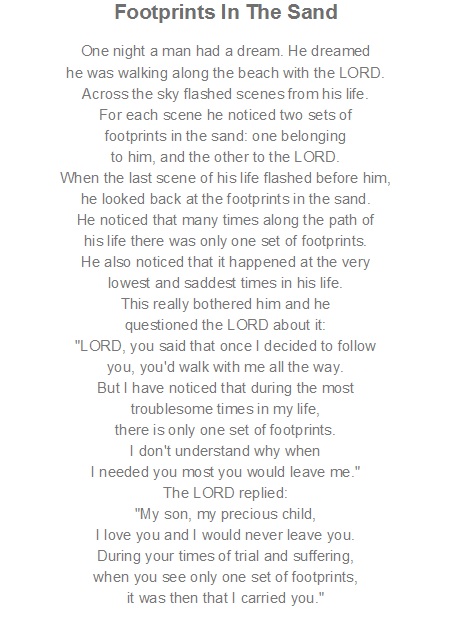peregrinate
[per-i-gruh-neyt]
verb
- (intr) to travel or wander about from place to place; voyage
- (tr) to travel through (a place)
adjective
from Latin, from peregrīnārī to travel
Word Origin and History for peregrinate
1590’s, from Latin peregrinatus, past participle of peregrinari “to travel abroad, be alien,” figuratively “to wander, roam, travel about,” from peregrinus “foreign”
Why Peregrinate?
When looking for a name for our school we wanted something that described the experiences our students would have with us. We knew they would be following a path to allow them to complete their journey. We knew they would be surprised at what they might find along this path whilst on their journey and for some, they would not have experienced anything like it before. We knew that we would be awakening exciting challenges, socially, emotionally and academically. However we also knew that their journeys end would be rewarding and successful. We also use the Footprints in the Sand poem to illustrate the caring side of life requirements and have always had a large copy of the poem up on our wall. Peregrinate also fitted perfectly into the ethos around the poem. You can read the full poem in the image opposite. Obviously as a school from Liverpool the great anthem “You’ll Never Walk Alone” also plays a big part in our culture and fits perfectly with Footprints in the Sand.
Why Peregrinate?
As you can see from the dictionary examples above, peregrinate was first introduced in the 1590’s to describe a journey, pilgrimage, tour, travel, trek or voyage. We felt that this perfectly represented out culture and beliefs of our school and represented our learners pathways as they journeyed to engage in education and eventually enjoy the rewards of achievement and success.
Why Peregrinate?
Since deciding on Peregrinate, it is amazing how often the name or meaning has come to light. Examples are usually around the journey element for example two of our staff recently took a holiday in Portugal and spent a day visiting Fatima, the site of the last miracle in 1917. Fatima’s fame is due to the Apparitions of Our Lady of the Rosary that appeared to three shepherd children; Lucia dos Santos and her two younger cousins, Francisco and Jacinta. Between May and October of 1917, the three children witnessed several apparitions. The last one, on October 13th, was confirmed by a miracle witnessed by 60,000 people known in the catholic world as “the day the sun danced”. Take a look at the Fatima website and see that ‘Peregrinate’ features as a complete section on their site. Whilst in Fatima they bought a commemorative certificate as proof of their visit. As you will see from the image opposite their journey or pilgrimage was known in Portuguese as a Peregrinacao.




